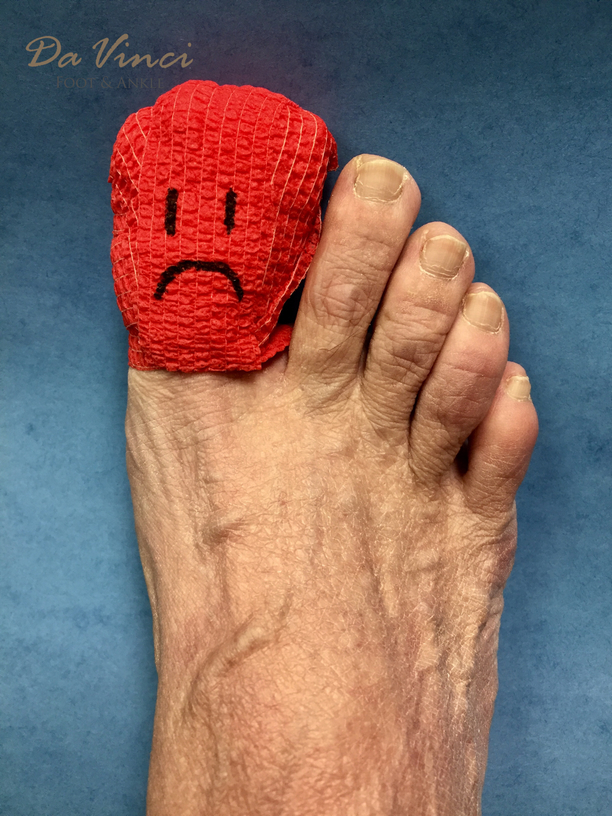Gout attacks are caused by deposits of crystallized uric acid in the joint. Uric acid is present in the blood and eliminated in the urine, but in people who have gout, uric acid accumulates and crystallizes in the joints. Uric acid is the result of the breakdown of purines, chemicals that are found naturally in our bodies and in food. Some people develop gout because their kidneys have difficulty eliminating normal amounts of uric acid, while others produce too much uric acid.

Why Gout?
Gouty attacks occur most commonly in the big toe because uric acid is sensitive to temperature changes. At cooler temperatures, uric acid turns into crystals. Since the toe is the part of the body that is furthest from the heart, it’s also the coolest part of the body—and, thus, the most likely target of gout. However, gout can affect any joint in the body including the ankle and knee. Gout is not isolated just to joints and in some individuals can accumulate in the soft tissues of the foot, causing significant pain over a large surface area. The tendency to accumulate uric acid is often inherited, while other factors that put a person at risk include: high blood pressure, diabetes, obesity, surgery, chemotherapy, stress, and certain medications and vitamins. For example, the body’s ability to remove uric acid can be negatively affected by taking aspirin, some diuretic medications (“water pills”), and the vitamin niacin (also called nicotinic acid). While gout is more common in men aged 40 to 60 years, it can occur in younger men and also occurs in women.
Gout Symptoms
A gout attack can be miserable and very debilitating. Most individuals experience the following symptoms:
- Intense pain that comes on suddenly with no recent trauma
- Redness, swelling, and warmth over the joint—all signs of inflammation
- Inability to put pressure on the foot or stand without intense pain
- Inability to bend a joint without intense pain, such as the big toe or ankle.
Foods Safe to Eat
Consuming foods and beverages that contain high levels of purines can also trigger a gouty attack. Some foods contain more purines than others and have been associated with an increase of uric acid, which leads to gout. Meat and seafood may increase your risk of gout, whereas dairy products may lower your risk. Consider exercising daily and regulating your fat and caloric intake. Below is a list of foods to consider altering your diet with that can help prevent a gout attack. Da Vinci Foot & Ankle has compiled a list of foods to avoid and good foods to eat; download our complete list of recommended foods: Da Vinci Gout Instructions.
- Green vegetables and tomatoes
- Fruits
- Breads and cereals that are not whole-grain •Butter, buttermilk, cheese, and eggs •Chocolate and cocoa
- Coffee, tea, and carbonated beverages
- Peanut butter and nuts
- Cherries and Cherry Juice
- Potatoes, butternut squash and sweet potatoes
If you think you’re suffering from a gout attack, we can offer various options to facilitate pain relief and to help prevent this from returning again in the future. Call today: 706.999.9994 or request an appointment online.
